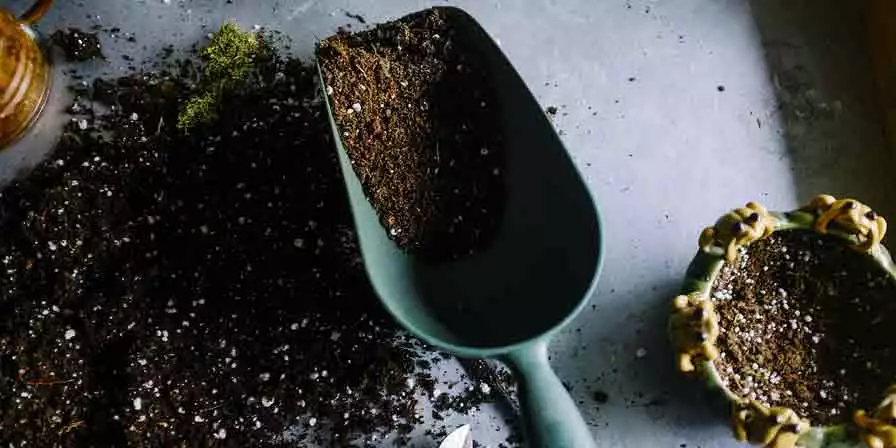Talking about my experiences with hydroponic grow media, I have always wondered which one to pick before I plant. Just like you, I have also read a lot about which grow media is the best for my plants but I believe it is something that comes to you naturally with experience.
As there are a lot of other factors that need to be taken care of for building a perfect hydroponic system and harvesting a perfect yield, grow media is one of them. A grow media or a hydroponic substrate is an inert material mostly natural which is used to hold the hydroponic plants. So, today let me take you through all the commonly available growing mediums or substrates as they are called.
Before jumping on to the types of hydroponic grow media, let’s understand what does a good grow media look like? I think this will give you a much better understanding in terms of why you should pick one over the other. These are taken from a report published by the Inter-American Institute for Cooperation on Agriculture.
Qualities of a Good Grow Media
- The particles of grow media should be less than 7mm and greater than 2mm in size.
- It must be able to retain enough moisture and drain excess liquid
- The grow media should be stable. Must not decompose easily
- It should not have the potential to carry toxins that are a threat to either humans or plants
- Should not be contaminated with industrial waste. Be sure to check this before using any grow media
- It must be in abundance and be potable
Some terms that I will use to describe the properties of the grow media.
WHC – Water holding capacity. Both high and low WHC media are useful for varaying hydroponic techniques.
AFP – Air Filled Porosity denotes the air flow of the medium. Higher is better.
CEC – Cation Exchange Capacity. A CEC count represents the concentration of minerals in your grow media. A lower concentration is better as it gives you more control over plant nutrition.
AHC – Air Holding capacity. Both High and Low AHC grow media can be useful.
Now let’s check one by one the types of hydroponic grow media and which one you should you for which plant.
Expanded Clay Pellets
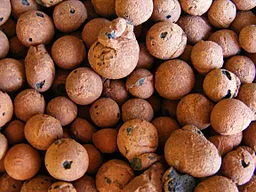
I have used clay pellets a lot of times but every time I get different results. Expanded clay is the most favoured grow media by home gardeners and small scale hydroponic system owners as it is easy to handle and great for some types of plants that we usually plant at our home. It is also called Light Expanded Clay Aggregate (LECA).
One of the most famous expanded clay grow media is the hydroton expanded clay pebbles. Small in size and can be used in both hydroponics as well as aquaponics.
Works Best With – Deep Water Full Irrigation Systems (roots submerged in water)
Pros
- High AFP which in turn means lesser blockages
- High AHC keeping the roots oxygenated naturally
- Biodegradable and Reusable
- Easy to transplant and harvest (Keeping them roots safe)
- Provides a positive environment for microbes
- pH level Neutral (out of the packet in most cases)
Cons
- Low CEC and WHC
- Costly when it comes to large usage
- Can cause problems due to silt formation
- Drain Quickly
Best use of expanded clay pebbles is when you use it in an ebb and flow hydroponic system or drip system.
Growstones
This grow media is a boon to the plants and the earth itself. The best thing is they are made from waste glass. Most of the manufacturers use discarded glass bottles and other stuff that can be easily recycled and create this foamy looking grow media. The maximum percentage is made up of soda-lime and a few grams of calcium carbonate.
Pros
- Light and easy to handle
- Cheaper and scalable
- Balanced AHC and WHC
- Environment-Friendly
Cons
- Bind onto roots of the pants
- Not easy to clean
- Not reusable
Best to use in permanent grow systems rather than using it for seed starting and then transferring the seed to other media.
Coconut Coir
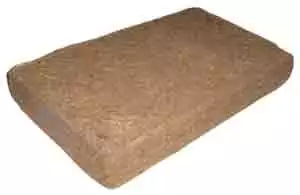
Coconut coir is the most natural grow media you can use for your plants. It is also called coconut peat in some regions. If you have ever seen a coconut or drank from the raw coconut and then broke that shell, you would find some brown fibre or jute-like substance. This is what helps coconut to preserve its fruit and maintain its taste. Well, it does the same thing for your hydroponic crop when you use it as a grow media.
Pros
- Bacteria free growth medium
- Fungus resistant and easily compressible
- Sustainable i.e you can use it multiple time (keep it clean)
- Medium CEC and AFP but high WHC
Cons
- Can take too much water-reducing oxygen supply
- Not pH neutral (need to balance with nutrient solution)
Best used with drip water hydroponics so that media is not overtly drowned with water.
Rice hulls/shells
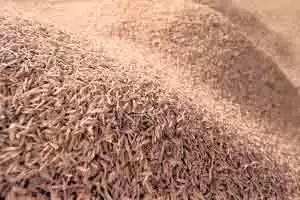
You must be wondering why we are using only byproducts of some other crops or fruits. Well, that’s what hydroponics is all about. Using resources frugally and responsibility to get much better yield than traditional. So, here are the rice husk or hull, whatever you wanna call them.
While harvesting rice, these rice husks are being sold as fodder or thrown away but it makes an excellent gro media for the hydroponics. One to keep in mind though is that you may not get a pH neutral medium with this one.
Note: Do not use fresh rice hulls. Use only Parboiled rice hulls (PRH) as they are sterilized and will prevent bacterial or fungal growth or if you are using normal rice hulls then they must be washed and kept very moist for ten days in order that all seeds in the rice
hulls will germinate. The germinated seedlings must be removed.
Pros
- As organic as it can get
- Good water drainage i.e high AFP
Cons
- The compost decays after some time, so you have to continuously check for filling it in
- Could ruin crops if not sterilized
Best used with deep water culture systems as the rice husk has low water retention.
Some recommended substrate mixtures are
– 50% rice hull : 50% ground volcanic stones
– 60% rice hull : 40% sand
– 60% rice hull : 40% ground clay bricks
– 80% rice hull : 20% saw dust
Sand
Not a very commonly used grow media because of their low aeration and tiny particle size which could lead to low oxygen levels for the crops. But it’s free. Yeah, you can get a bucket full of sand just by the corner garden or roadside.
A mixture of sand and other media like perlite is more often used in hydroponics.
Pros
- It’s Free
- Highly Porous i.e High AFP
Cons
- Can washout after sometime
- Does not hold bigger plants
Sand can be best used with plants that don’t grow big and require constant water support. I hope there is no need to buy sand from Amazon :p
Also Read “How to Grow Hydroponic Lettuce At Home“
Perlite
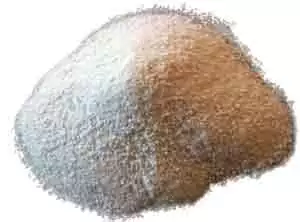
Do you love volcanos? Do you love when the lava comes down and cools? Right, that is the process of how we get perlite. It is a rock formed by volcanic eruptions and has a lower density than water. Now, if you have studied science you must have already understood the problem with perlite. Oh yes, it floats in water as the density is low which makes it unsuitable for systems like ebb and flow or deep water culture.
Pros
- Light and Easy to Use
- High AHC
- High AFP
- Nutrition control is easy with perlite
- Low CEC
Cons
- Floating properties could flush it all
- Toxic (as it comes from the volcano)
Best used with drip systems and when mixed with other grow media like sand or coconut coir.
Rock wool
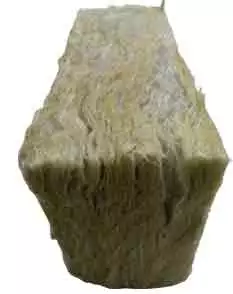
Spun basalt rock fibres are used to make Rockwool. It is also called stone wool because it looks like wool but has the properties of a stone. Basalt stones are melted and spun together and pressed in a form of a cube to get Rockwool. This is also very commonly used in the hydroponic community.
Pros
- High water retention is that high WHC
- Low CEC
- Very stable and durable
Cons
- High pH. Need to soak in water before use to control pH
- Threat to Environment ( Non-Biodegradable)
- Fibre and Dust from Rockwool garms body parts like eyes.
Best Used in Ebb and Flow system
Starter Plugs
These are the safe replacement of Rockwool. Safe and non-hazardous to humans and plants. This grow media has become very popular for seed starting via hydroponics. It is easily available on Amazon and anyone can buy it and sow their own hydroponic seeds. They are made by taking organic compost and pressing it enough to be able to make a puck kind of thing. They are mostly on the side of the grow pots so you only have to place them in the grow pot from the packet.
Pros
- Very easy to Handle
- Seed Starters
- Sustainable and degradable
- Balanced WHC
Cons
- With regular water flow, may get washed off
- Mostly used for the purpose of seed starting
- Expensive
Best used while starting seed by deep water culture method or ebb and flow method.
Vermiculite
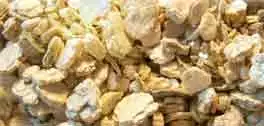
Does it sound familiar? Yes, just like perlite, right? The fun part is that vermiculite is also processed in the same way as perlite. These are mineral rocks subjected to high temperatures to get odourless and strike grow media.
Note: Various types of vermiculites are available. Make sure to check if the one you get is good for hydroponics.
Pros
- Good WHC
- Low CEC
Cons
- Poor Drainage
- Low oxygen circulation i.e low AFP
Pumice
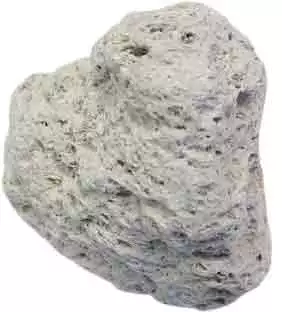
Pumice is a type of rock mostly found in volcanic regions during mining. The colours may vary depending on the pressure and atmosphere it has gone through. It may be yellow, grey or pale white. It is a porous and lightweight stone that makes a good grow media for hydroponics.
Pros
- Lightweight
- Good Water retention i.e high WHC
- Good Oxygen retention i.e AFP
Cons
- Smaller size stones may float in water
Also Read “Top 10 Common Hydroponic Terms you should know“
Gravel

Now, this thing is just like sand, easily and freely available. Be sure to only use gravel after washing it thoroughly as it can have some bacteria and fungus which can damage the plant roots. If you are on a DIY spree to hydroponics then gravel is a good grow media to start with. The only thing is that it will be a little hard to start seeds with gravel.
Pros
- Cheap
- Easy to handle and clean
- Excellent drainage
Cons
- Low WHC
- Roots may not get enough water
Not suitable for deep water culture and ebb and flow systems.
Wood fiber
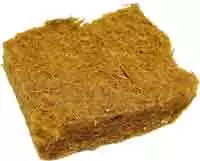
Once again a DIY grow media. It can be mixed with sand or perlite to make it more stable. Wood fibres are generally wood scraps that are just waste for some people but for hydro enthusiasts like us, it’s a boon. It is a perfect row media and is also said to enhance plant growth.
Pros
- Freely available
- Organic
Cons
- Gets decayed after some time
- It May not be safe for the plant
- Can bring some teeny tiny pests
Sheep wool
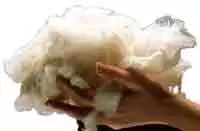
This one is a little weird but yes people are using this as well. According to what I read on Wikipedia about sheep wool is that they are really efficient than other grow media, having 70% more air capacity than peat, coconut coir, perlite etc and 44% more water capacity.
Pros
- Inexpensive
- Better WHC
- High AFP
Cons
- May flow away with the water
- Not very stable
Best used in wick systems or drip systems where water intake is controlled.
Hope this helped you guys, if not I am also sharing a link to the video which you can refer.

